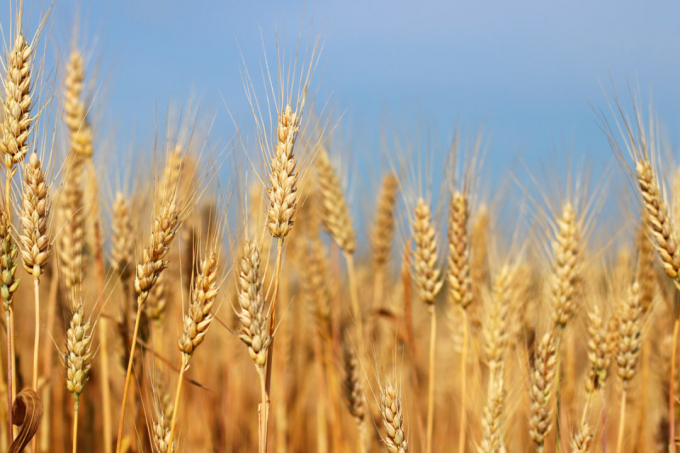June 21, 2025 | 01:55 GMT +7
June 21, 2025 | 01:55 GMT +7
Hotline: 0913.378.918
June 21, 2025 | 01:55 GMT +7
Hotline: 0913.378.918

The USDA had cut its forecast for supplies by 1.7 million tonnes to 1.052.8 billion as lower India production more than offsets an increase for Russia. Photo: Adobe Stock
World wheat markets are at their highest price levels since 2008 as reduced supplies, held back by the conflict in Ukraine, a move by India to limit shipments abroad, and the weather — notably a heat wave affecting western Europe a few weeks ahead of harvesting — tighten the market amid strong demand.
According to the United Nations Food and Agriculture Organization (FAO), which published its Cereal Price Index on June 6, international wheat prices rose for a fourth consecutive month, up 5.6% in May, to average 56.2% above their value last year and only 11% below the record high reached in March 2008.
“The steep increase in wheat prices was in response to an export ban announced by India amidst concerns over crop conditions in several leading exporting countries, as well as reduced production prospects in Ukraine because of the warm weather,” the Rome, Italy-based UN body said.
In its World Agricultural Supply and Demand Estimates report, published June 10, the US Department of Agriculture (USDA) said that “the global wheat outlook for 2022-23 is for lower supplies, reduced consumption, fractionally lower trade, and slightly lower ending stocks.”
The USDA had cut its forecast for supplies by 1.7 million tonnes to 1.052.8 billion as lower India production more than offsets an increase for Russia.
“India’s production is lowered 2.5 million tonnes to 106 million as extreme temperatures in March and April reduced yields during grain fill,” the USDA said. “Russia’s production is raised 1 million tonnes to 81 million with all of the increase in winter wheat on generally favorable weather conditions to date.”
The USDA cut its projection for world wheat consumption in 2022-23 by 1.5 million tonnes to 786 million, “mainly on lower feed and residual use for India and less food, seed, and industrial use for Sri Lanka and Argentina.”
“Projected 2022-23 global trade is decreased 300,000 tonnes, to 204.6 million, as lower exports from India are not completely offset by higher exports from Russia and Uzbekistan,” the USDA said. “India’s exports are reduced 2 million tonnes, to 6.5 million, as the government intends to restrict exports to some destinations to ensure sufficient domestic supplies. Russia’s exports are raised 1 million tonnes, to 40 million, which would be the second largest on record.”
The USDA also noted that Russia’s supplies are projected higher for 2022-23 and its export prices are “more competitive than most other exporters.”
In its May 19 Grain Market Report, the International Grains Council (IGC) said wheat export prices rallied during the previous month, with its index for prices at its highest level since March 2008.
“Against the backdrop of hostilities in Ukraine, global supply worries were fueled by unfavorable cropping weather in some major exporters, including the United States, Canada, Argentina and parts of the European Union, while India’s decision to curb wheat exports propelled markets even higher recently,” the IGC said. “North American markets were especially strong, as adverse crop weather compromised production prospects in the US and Canada. Nonetheless, continued slow export interest helped to anchor US futures prices.”
EU export quotations (France) initially eased as traders eyed waning old crop demand and competition from Russia and India, the IGC said.
“However, more recent impetus for price gains stemmed from mounting concerns about intensifying dryness in some regions, notably in France,” the IGC said. “Nearby export quotations in Russia firmed as shipments continued despite logistical and payment difficulties. However, values remained poorly defined, especially for new crop positions.”
world-grain.com

(VAN) Poultry production in Poland, which has only started recovering from devastating bird flu outbreaks earlier this year, has been hit by a series of outbreaks of Newcastle disease, with the veterinary situation deteriorating rapidly.

(VAN) Extensive licensing requirements raise concerns about intellectual property theft.

(VAN) As of Friday, a salmonella outbreak linked to a California egg producer had sickened at least 79 people. Of the infected people, 21 hospitalizations were reported, U.S. health officials said.

(VAN) With the war ongoing, many Ukrainian farmers and rural farming families face limited access to their land due to mines and lack the financial resources to purchase needed agricultural inputs.

(VAN) Vikas Rambal has quietly built a $5 billion business empire in manufacturing, property and solar, and catapulted onto the Rich List.

(VAN) Available cropland now at less than five percent, according to latest geospatial assessment from FAO and UNOSAT.

(VAN) Alt Carbon has raised $12 million in a seed round as it plans to scale its carbon dioxide removal work in the South Asian nation.